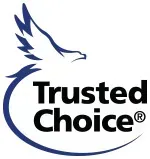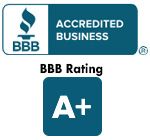
Understanding Life Insurance Trends for 2025
The importance of understanding life insurance trends becomes particularly critical as we step into 2025. Staying informed equips individuals with the knowledge necessary to make educated choices that secure their financial futures while ensuring family protection. The statistics shed light on industry dynamics and encourage thoughtful conversations about customized coverage needs.
2024 LIMRA Insurance Barometer Study Insights
The findings of the 2024 LIMRA Insurance Barometer Study provide us with valuable insights, paving the way for trends in 2025. While 52% of Americans have life insurance, alarmingly, 102 million individuals are either uninsured or underinsured. This statistic underscores the need for a more comprehensive understanding of coverage options and benefits available.
The Coverage Gap for Women
An intriguing revelation from the study highlights a gap in life insurance coverage among women. A staggering 54 million women either lack life insurance altogether or require additional coverage. Women are found to be more likely to need insurance than men, with 45% versus 39%. This indicates an urgent need to bridge this gap and ensure equitable access to financial protection for all.
Reasons for Not Owning Life Insurance
Several reasons contribute to Americans not owning life insurance, with perceived cost being the most prominent factor (72%). Financial priorities take second place (54%), and confusion regarding the necessary amount or the type of policy to buy follows closely (52%). Addressing these concerns through education and transparency could significantly boost coverage adoption rates.
Misconceptions About Affordability
There is a notable misconception around the affordability of life insurance. A mere 25% of respondents could correctly estimate the cost of a 20-year, $250,000 level-term policy for a healthy 30-year-old. This highlights a prevalent misunderstanding about the actual expense of life insurance, pointing to the need for clearer communication about its true affordability.
Barriers for Lower-Income Households
Lower-income households face distinct challenges, with 56% of individuals earning under $50,000 annually identifying cost as their primary barrier. Many within this demographic operate based on gut feelings or guesses rather than well-informed decisions, indicating the need for targeted education on budgeting for life insurance.
Despite these challenges, it is crucial to emphasize that life insurance remains an essential and accessible financial tool. With proper guidance, it can be integrated into family budgets without causing financial strain, offering much-needed peace of mind.
Life insurance should be regarded as a critical safeguard for families, promising both security and tranquility. As we move into 2025, it is imperative to assess individual needs actively, dismantle cost-related myths, and explore policy options that provide the right fit. Bridging coverage gaps in the U.S. starts with addressing these challenges.
Understanding your options can begin today. Reach out to financial advisors or utilize online calculators for personalized coverage estimates. By sharing this blog with loved ones, you embark on significant conversations surrounding financial security and the essential role of life insurance planning.



